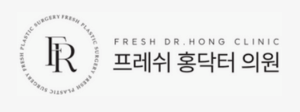Love Handle Liposuction with Dr. Hong – Expert Body Contouring Across Gangnam, Apgujeong, Cheongdam, Myeongdong, Hongdae and All of Seoul
Smooth out irregularities. Restore natural lines.
Liposuction revision focuses on correcting issues from a prior procedure—lumps, dents, asymmetry, over-resection “hollows,” contour bands, adhesions, or lingering bulges. Dr. Hong designs a personalized plan to smooth surfaces, rebalance volume, and bring back a natural, confident silhouette.
Why patients choose Dr. Hong for revision
- Aesthetic triad: Balance of volume, surface smoothness, and transitions (the borders between treated and untreated areas).
- Multi-modal toolkit: Strategic re-lipo, micro-fat grafting, scar/adhesion release, and meticulous feathering to blend edges.
- Scar-aware planning: Entry points and access paths chosen to minimize additional scarring while addressing tethered areas.
- Safety-first approach: Conservative corrections staged when needed to avoid new irregularities.
- Revision experience: Familiar with correcting work from different techniques and devices.
Common problems after liposuction (that revision can address)
- Surface irregularities: ripples, waviness, or “cellulite-like” dents caused by uneven fat removal
- Over-resection hollows: sunken zones that need fat restoration
- Step-offs and harsh borders: poor blending between treated and untreated areas
- Adhesions/tethering: skin stuck to underlying fascia creating visible dimples or bands
- Residual bulges: under-treated pockets that still protrude
- Asymmetry: one side thinner or lumpier than the other
- Scar visibility or placement issues
Are you a candidate?
You may benefit from revision if you have:
- Persistent lumps/dents 3–6+ months after your first surgery
- Asymmetry or step-offs that show in clothing and photos
- Hollows from aggressive lipo needing volume restoration
- Stable weight and realistic expectations—revision improves shape; perfection isn’t always possible
- Willingness to follow a staged plan if one session cannot fully correct all issues
It’s best to evaluate once swelling has stabilized (often ≥3–6 months post-op). Earlier intervention is considered case-by-case.
How Dr. Hong evaluates revision cases
- History review: Original op areas, dates, devices used, volumes removed, garment compliance.
- Multi-angle exam: Standing/posed photos; pinch test to differentiate residual fat vs. scar tissue vs. hollow.
- Mapping: Marks of high/low areas, tether points, and transition zones.
- Plan: Single-session vs. staged corrections, plus garment and recovery strategy.
Techniques used in liposuction revision
- Feathering re-lipo: Gentle, multi-plane passes to even out residual bulges and soften borders.
- Subcision/adhesion release: Freeing tethered skin from underlying fascia to smooth dimples or bands.
- Micro-fat grafting (nanofat/microfat): Precise filling of hollows, dents, and contour gaps; layered placement for a smooth surface.
- Scar management: Intralesional care, silicone therapy, or minor scar revisions when indicated.
- Edge blending: Particular attention to iliac crest, bra line, thigh seams, axillary folds, and knee/ankle transitions to avoid new step-offs.
- Selective skin tightening: For mild laxity, adjunct tightening options may be discussed.
What to expect on procedure day
- Anesthesia: Local with sedation or general—based on areas, volume, and comfort.
- Targeted access: Tiny, strategic entry points; careful hemostasis to limit bruising.
- Conservative correction: Under-correction is safer than over-correction; fine-tuning beats aggressive passes.
- Compression garment: Applied immediately to support re-draping and reduce swelling.
Recovery timeline (typical)
- Days 1–3: Soreness, swelling; light walking encouraged.
- Week 1–2: Back to desk work; bruising fades; wear compression 24/7 except showers.
- Weeks 3–4: Light exercise; swelling ~60–70% improved; surface looks more even in clothing.
- Weeks 6–8: Most activities cleared; contour refinements more visible.
- 3–6 months: Final blending as tissues settle; micro-fat graft take continues to mature.
Timelines vary by area, volume, and whether grafting/subcision was performed.
Results you can expect
- Smoother surfaces with fewer visible dents or ripples
- Rebuilt hollows with micro-fat for a natural, soft look
- Cleaner transitions at borders (no harsh step-offs)
- More symmetry side-to-side and front-to-back
Aftercare essentials
- Compression as directed to guide tissue re-draping
- Gentle lymphatic support only if advised; avoid aggressive massage early
- Protein-rich diet, hydration, and walking to aid recovery
- Incision and scar care with sun protection for optimal fading
- Weight stability to preserve improvements (especially important after fat grafting)
Risks & how we minimize them
Possible risks include residual irregularity, asymmetry, prolonged swelling, seroma, contour over- or under-correction, fat graft partial resorption, numbness, or infection. Risks are reduced via conservative volumes, layered techniques, meticulous hemostasis, and close follow-up. Staged plans are used when one session cannot safely achieve the goal.
FAQs
Can all dents be fixed in one session?
Not always. Dense scarring or large hollows may require
staged subcision + micro-fat grafting for best outcomes.
Will fat grafting feel lumpy?
Properly emulsified, micro-layered grafts aim for a smooth feel; early firmness softens as healing progresses.
How long do results last?
Evening out bulges and restoring hollows is durable.
Grafted fat that “takes” behaves like normal fat—maintain stable weight.
What if I’m still swollen from the first surgery?
Assessment is best after swelling plateaus (often ≥3–6 months). In special cases, earlier review may be considered.
Ready to restore natural contours?
Book a consultation with
Dr. Hong to create a precise, step-by-step revision plan—combining feathering, adhesion release, and micro-fat grafting—to smooth surfaces and bring back balanced, confident lines.

